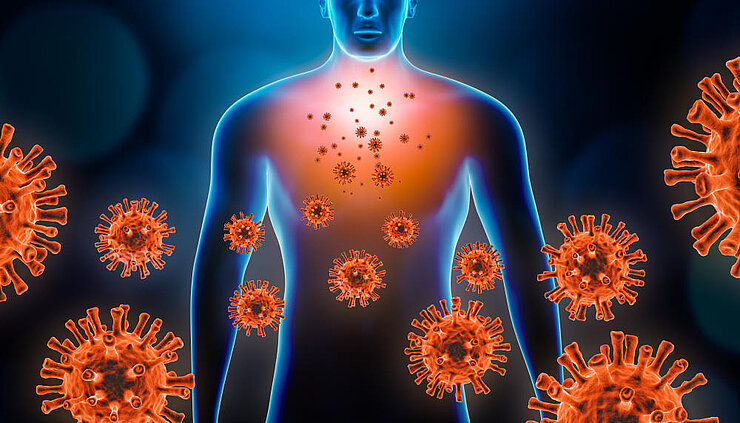Two sites of inflammation

Bronchitis, meningitis, gastritis, arthritis – the suffix, "-itis", indicates that this is a case of inflammation. While inflammation is a desired response of the body in many cases, it can occasionally cause diseases as well.
Typically, it is associated with five symptoms: The affected parts of the body heat up and become reddened, they swell up and hurt. Loss of function is another symptom.
In an acute inflammation, the body responds to infections, tissue injuries or harmful substances such as chemicals. When the immune defence detects, for example, the presence of microorganisms, proteins and white blood cells leave the blood vessels and migrate towards the afflicted tissue site. Once in place, the neutrophils, a sub-group of white blood cells, kill the microorganisms. For this purpose, they release substances, which can, however, not distinguish between foreign invaders and the body's own cells and therefore damage the surrounding tissue as well. In the next step, scavenger cells of the immune system dispose of the killed bacteria and the damaged tissue is rebuilt. This shows that inflammation is a desirable process that removes the causative stimulus and re-establishes homeostasis–the state of equilibrium in the tissue.
The other side of the coin
As useful as this reaction is–it comes at a price because inflammation can become chronic and damage the tissue massively. This is the case, for example, when the immune system fails to eliminate the invader. In addition, there are also numerous chronic inflammations that are not as well understood and are related to chronic diseases in humans.
When the body turns against itself
One trigger might be an autoimmune disease, such as rheumatoid arthritis or multiple sclerosis. Here, the immune system erroneously detects endogenous body structures as foreign and attacks them. Since the stimulus is present permanently, the immune cells cannot remove it and thus damage the own body. Cancer, Alzheimer's disease and various cardiovascular and lung diseases are also related to inflammations.
How inflammation develops and works
Scientists at the HZI are interested in this topic for various reasons. They, for example, examine how the signalling cascades leading to chronic inflammation can be prevented therapeutically. They also investigate how errors in the regulation of the complex immune system can lead to inflammation. The influence of infections and associated inflammatory reactions on the development of neurodegenerative diseases is also a focus of a research group at the HZI. This group mainly studies how inflammatory processes contribute to the development of Alzheimer's disease, the most common type of dementia.
(bma)
Involved research groups
-
Biomarkers of Infectious Diseases
 PD Dr Frank Pessler
PD Dr Frank Pessler -
Mechanochemistry of Inflammation
 Dr Andriy Goychuk
Dr Andriy Goychuk -
Neuroinflammation and Neurodegeneration
 Prof Dr Martin Korte
Prof Dr Martin Korte


![[Translate to English:] Endogener ASC-Speck, abgebildet in 3D mit dSTORM. © iScience, CC-BY-4.0](/fileadmin/_processed_/c/7/csm_2023_Webnews_LMU_Sieben_c_iScience_CCBY40_3a383228ff.png)







